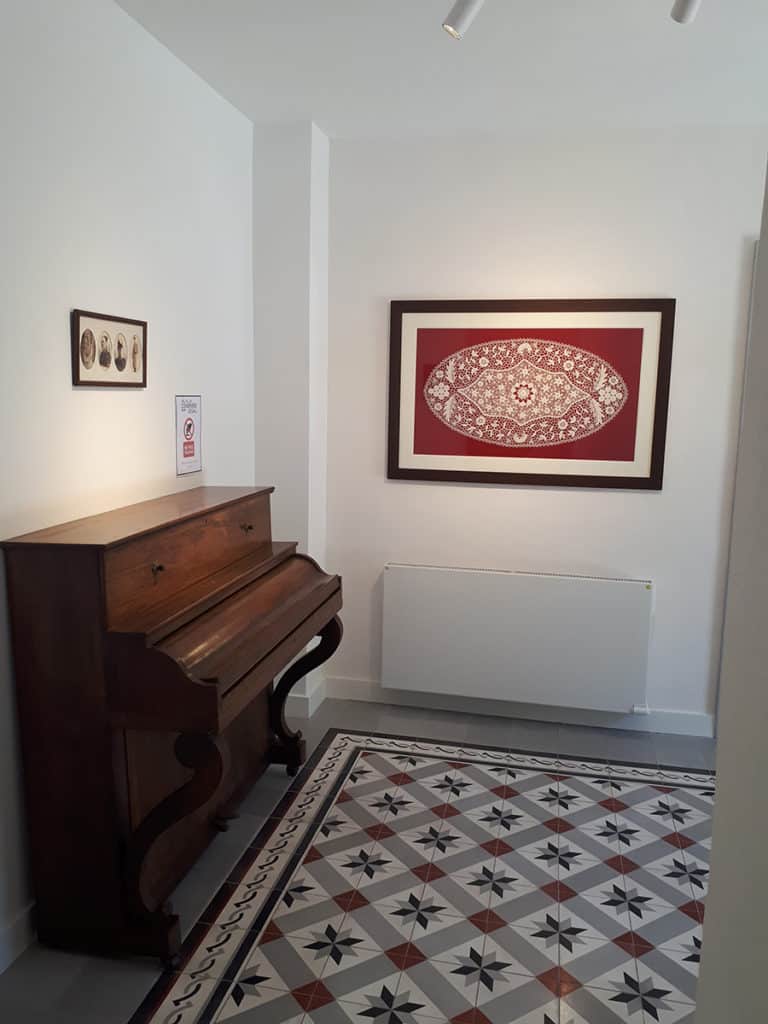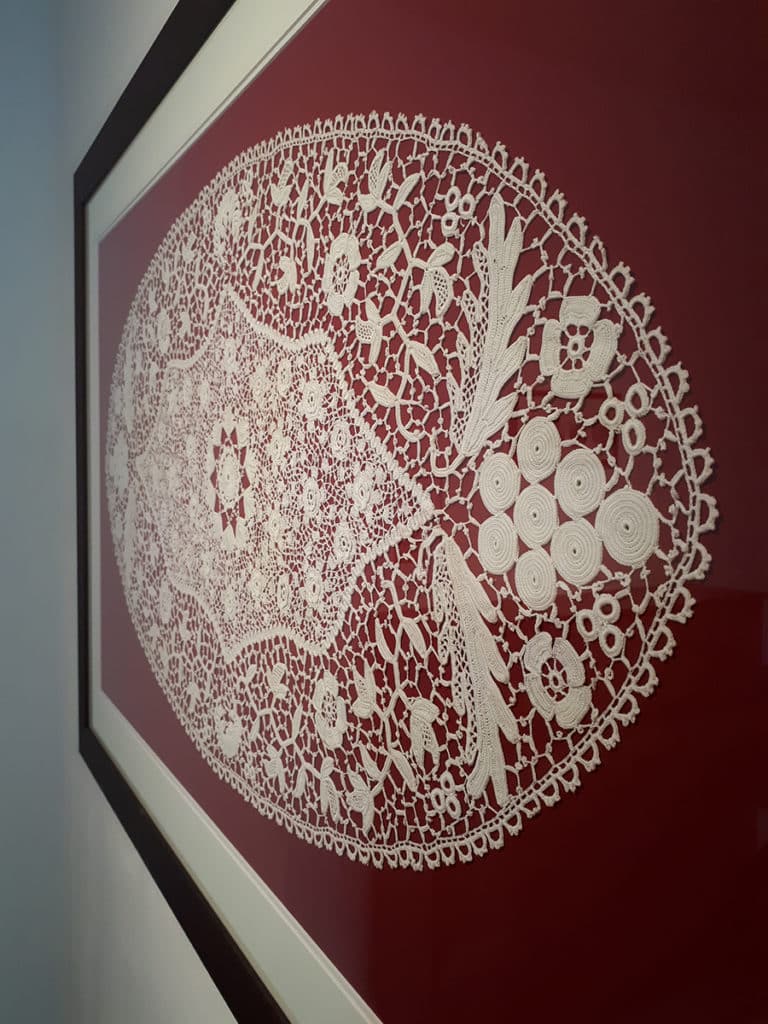In the hall of the former seaside villa of the Le Gall family hangs on the wall a Bigouden doily made from Irish lace using the technique known as "picot piqué". This work, which was made in the 1950s, was generously given to us by Lucile Chever, lacemaker and active member of the cultural association "Dame Picot" which aims to promote this traditional skill.
This doily is made up of a network of motifs inspired by Irish coins: oak leaves, farandoles of leaves, ears of corn, bunches of grapes, double roses, eglantines, helices, etc. The motifs were made using a steel hook, DMC wire and cordonnet (linen thread). They are laid out harmoniously on a canvas before being firmly woven. The network is then consolidated with a picot stitch.
Irish lace was the main subsistence activity of the workers in the canneries of the Breton coast during the great sardine shortage of 1902 to 1908. During this period of great famine in Brittany, religious congregations as well as wealthy aristocrats mobilised to finance the teaching of this craft to factory workers in order to offer them a source of income in these difficult times. The finished works were then sent to Paris and sold to elegant ladies in department stores.



